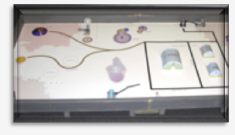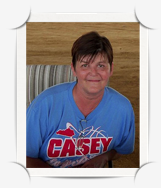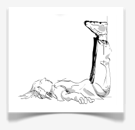NASA’s Glory mission ended Friday after the spacecraft failed to reach orbit following its launch from Vandenberg Air Force Base in California.
NASA has begun the process of creating a Mishap Investigation Board to evaluate the cause of the failure. Telemetry indicated the fairing, a protective shell atop the satellite’s Taurus XL rocket, did not separate as expected.
The launch proceeded as planned from its liftoff at 5:09 a.m. EST through the ignition of the Taurus XL’s second stage. However, the fairing failure occurred during the second stage engine burn. It is likely the spacecraft fell into the South Pacific, although the exact location is not yet known.
NASA’s previous launch attempt of an Earth science spacecraft, the Orbiting Carbon Observatory onboard a Taurus XL on Feb. 24, 2009, also failed to reach orbit when the fairing did not separate.
NASA’s Orbiting Carbon Observatory Mishap Investigation Board reviewed launch data and the fairing separation system design, and developed a corrective action plan. The plan was implemented by Taurus XL manufacturer Orbital Sciences Corporation. In October 2010, NASA’s Flight Planning Board confirmed the successful closure of the corrective actions.
The Glory Earth-observing satellite was intended to improve our understanding of how the sun and tiny atmospheric particles called aerosols affect Earth’s climate.
 Sixteen student teams from nine elementary, middle and high schools will put their software-enabled, battery-powered LEGO robots against the clock in the 5th Annual Southern California Robotics Competition at NASA’s Jet Propulsion Laboratory in Pasadena, Calif., on Tuesday, March 15, 2011.
Sixteen student teams from nine elementary, middle and high schools will put their software-enabled, battery-powered LEGO robots against the clock in the 5th Annual Southern California Robotics Competition at NASA’s Jet Propulsion Laboratory in Pasadena, Calif., on Tuesday, March 15, 2011. 



 NASA Explorer Schools educator Holley Sykes, a resource teacher from Briarwood Elementary, just finished an activity called Fluid Shift. Students are challenged to simulate the bodily fluid shift seen in astronauts while in space. After taking a baseline heart rate and baseline ankle measurement, students lie on the floor and point their legs upward against the wall. Every minute their lab partner takes an ankle measurement and every two minutes a new heart rate. After 10 minutes, students compare their ankle measurements and heart rates.
NASA Explorer Schools educator Holley Sykes, a resource teacher from Briarwood Elementary, just finished an activity called Fluid Shift. Students are challenged to simulate the bodily fluid shift seen in astronauts while in space. After taking a baseline heart rate and baseline ankle measurement, students lie on the floor and point their legs upward against the wall. Every minute their lab partner takes an ankle measurement and every two minutes a new heart rate. After 10 minutes, students compare their ankle measurements and heart rates.  Here is a great idea for the Messenger: Staying Cool — My Angle on Cooling Effects of Distance and Inclination module. Your students can create solar “cookers.” One of the variables is choosing how the sun enters the cooker, either directly or at an angle. Share with us on NEON your students/ results.
Here is a great idea for the Messenger: Staying Cool — My Angle on Cooling Effects of Distance and Inclination module. Your students can create solar “cookers.” One of the variables is choosing how the sun enters the cooker, either directly or at an angle. Share with us on NEON your students/ results. Astronauts aboard STS-133 are wrapping up a series of scheduled spacewalks, or extravehicular activities. When astronauts venture outside of their spacecraft, they need spacesuits to protect them from the solar radiation, the cold temperatures of space and fast-moving particles called micrometeoroids.
Astronauts aboard STS-133 are wrapping up a series of scheduled spacewalks, or extravehicular activities. When astronauts venture outside of their spacecraft, they need spacesuits to protect them from the solar radiation, the cold temperatures of space and fast-moving particles called micrometeoroids.